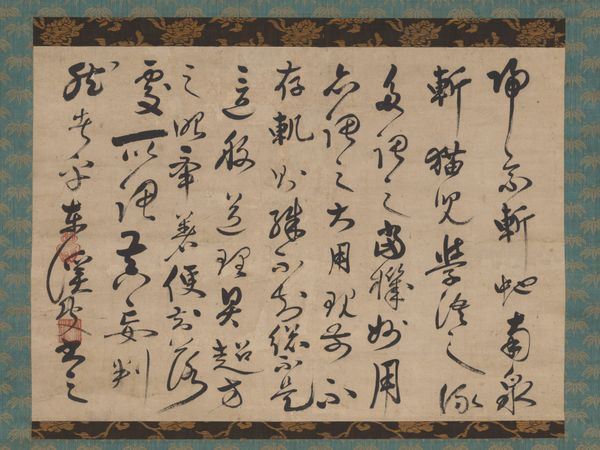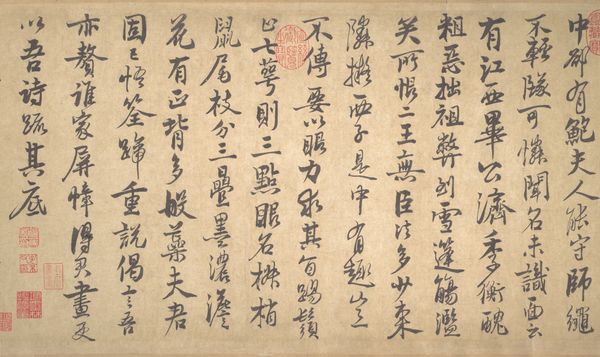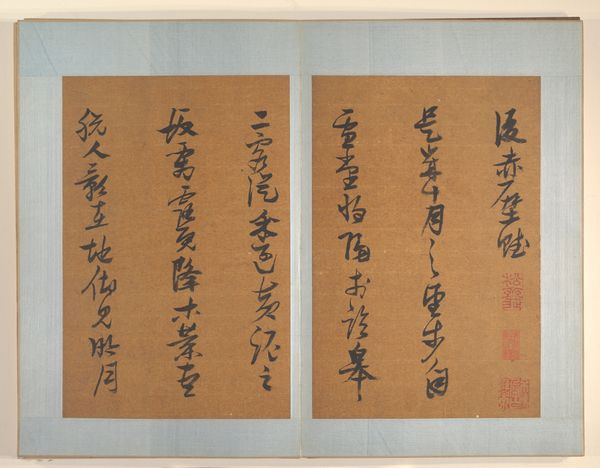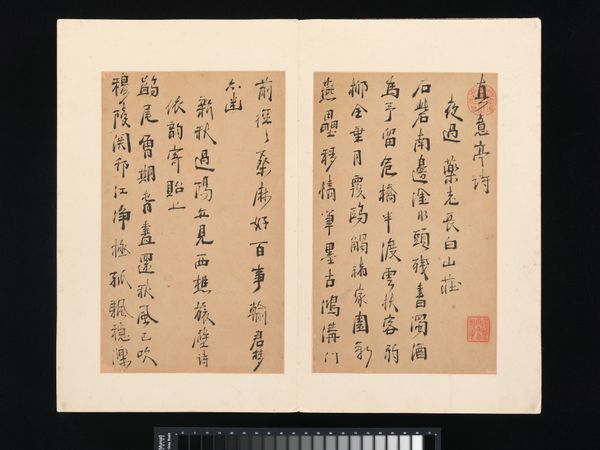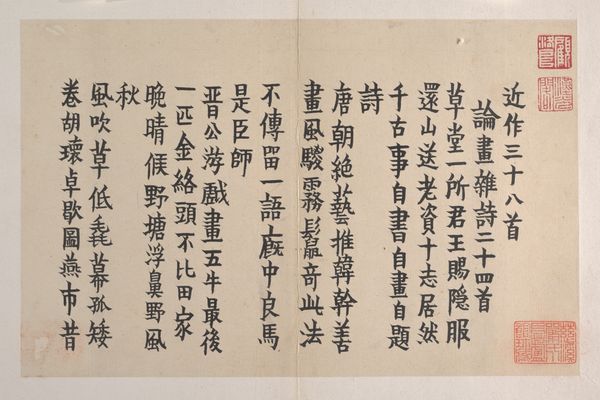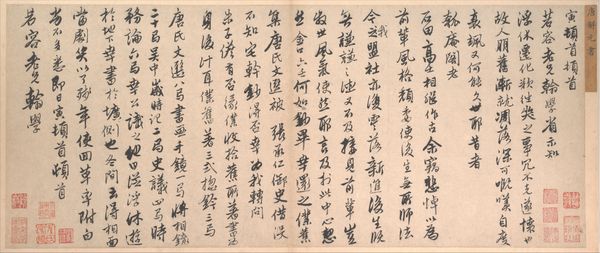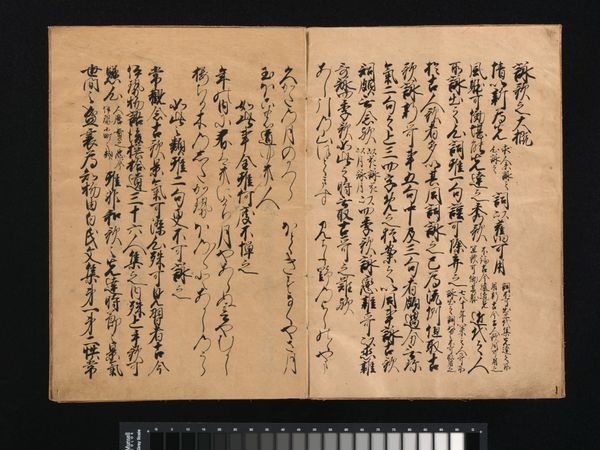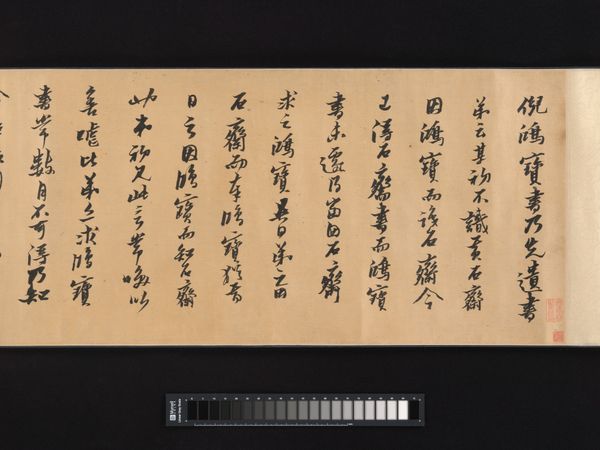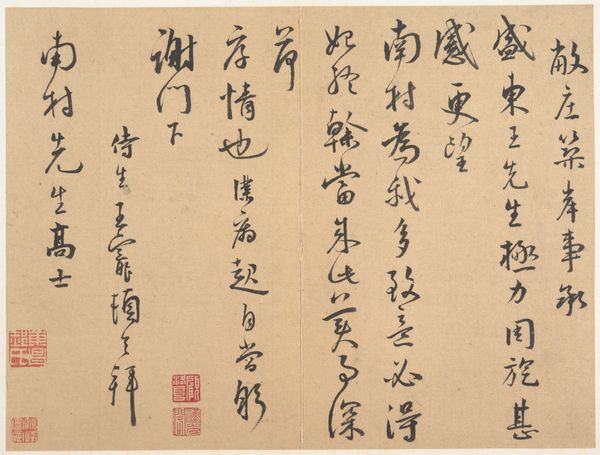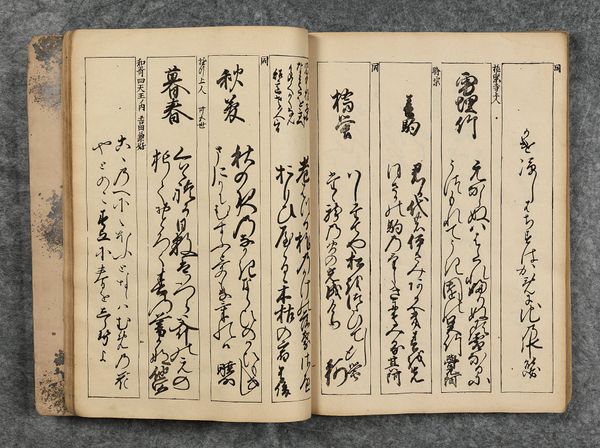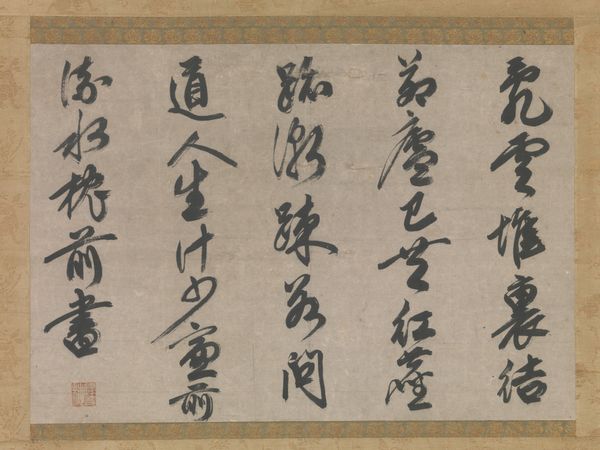
Paintings of Ike no Taiga (Ike Taiga gafu); Paintings of Yi Fujiu (I Fukyū gafu) 1803
0:00
0:00
print, woodblock-print
# print
#
book
#
asian-art
#
landscape
#
woodblock-print
Dimensions: Each book 10 1/2 × 7 1/4 in. (26.7 × 18.4 cm)
Copyright: Public Domain
Curator: Let's delve into this fascinating woodblock-printed book from 1803, entitled "Paintings of Ike no Taiga; Paintings of Yi Fujiu," made by Nakagawa Tenju. You can find it at the Metropolitan Museum of Art. The opened book displays a stark contrast of textures between paper and crisp black ink of the typography. Editor: It feels… introspective. Quiet. There’s a calligraphic energy, yet the overall composition strikes me as deliberately restrained. Like peering into a world governed by intellect and refined aesthetic values. Curator: Nakagawa Tenju here presents a compilation featuring the works and styles of two prominent artists: Ike no Taiga, a master of Japanese Nanga painting, and Yi Fujiu, likely representing artistic influences from China. Understanding that interplay – the transcultural dialogue of artistic exchange at the time – is critical here. It serves not just as documentation, but also participates in an ongoing negotiation about aesthetic value and cultural capital. Editor: And I see that reflected in its functionality as a reference for other artists. But thinking of how that knowledge gets applied through time really fascinates me. How has this guide affected artistic practices and visual culture, you know? In which sociopolitical environment have such art instruction books appeared? It opens up the door for so much discussion of cultural transmission and, more significantly, potentially of how such tradition may have contributed to inclusivity (or exclusivity) among Japanese and even global artists and artistic practices through decades of study and publication. Curator: Exactly! By considering how museums present and contextualize such artifacts, we reveal our own present-day cultural priorities. What is it *we* wish to value about this book and its content? How do we present a volume with such explicit intention of informing and instruction beyond art historical details and embrace contemporary conversations that reveal our current social, cultural, and political landscapes and needs? Editor: Very true, to be immersed within its history allows the modern-day artist, activist, educator, and art appreciator to contemplate tradition as something ever-evolving that changes, affects, and morphs as our lives change. Curator: Precisely.
Comments
No comments
Be the first to comment and join the conversation on the ultimate creative platform.
